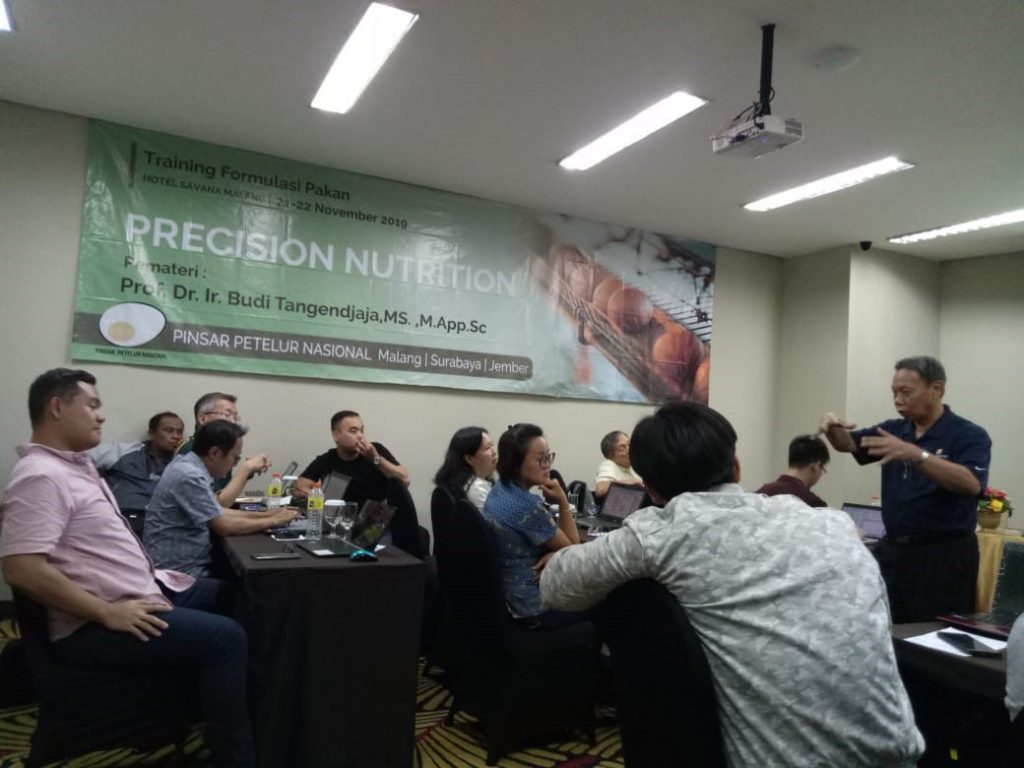Chicken and eggs are a diet staple in Indonesia – the world’s fourth most populous country spread over more than 17,000 islands. Covering the largest island country is no small feat, but the U.S. Grains Council (USGC) has expanded tried-and-true promotion programs for U.S. dried distiller’s grains with solubles (DDGS) and corn gluten meal (CGM) to capture more of the growing feed demand throughout Indonesia.
“Our job is to go find new demand, so that is what we did,” said Caleb Wurth, USGC assistant director for Southeast Asia. “In this case, we discovered significant pockets of layer production that had not considered DDGS before.”
The Council has a long history operating in West Java – servicing and developing the region since the 1990s. After years of engagement, this region is dominated by regional integrators – housing 876 million broilers and 32 million layers – who consistently use DDGS and CGM in their feed rations. This concentrated programming effort helped lead to Indonesia’s importation of nearly 974,000 metric tons of U.S. DDGS in the 2018/2019 marketing year – up substantially from nearly 517,000 tons in 2016/2017.
To expand on this success, the Council began to focus efforts outside of West Java, setting sights on the 47 million layers nestled around the locals of Blitar, Kediri, Surabaya, Maland and Jember in East Sumatra as well as the outlying islands of Sumatra and Sulawesi. In these remote markets, the practice of on-farm mixing is still quite prevalent. Within these self-mixing systems, owners formulate their own ration, supplementing concentrates from a local feed mill – often utilizing a simple mixture of local corn and rice bran. While the nutrition delivery mechanisms can be quite crude, the farm sizes in these locations can still range from 10,000 to 1 million birds.
Mimicking programs executed in other parts of Southeast Asia, Dr. Budi Tangendjaja, a long-time USGC consultant, conducted multiple feed formulation trainings across Indonesia. One such training brought together a USGC-member commercial team and a group of layer farm owners representing a local farmers’ association (PPN) in Padang, Indonesia, for a two-day feed formulation training seminar. The group learned how to maximize use of DDGS and CGM using least-cost feed formulation software. The Council made efforts to integrate the younger generation into the programming as well, recognizing the need to exhibit the benefits of DDGS usage to the emerging leaders of the community.
The feed formulation seminars demonstrated DDGS could reduce overall feed costs, and CGM could be beneficial for the early laying period of production. Immediate results of this seminar series included participants reporting increasing DDGS inclusion levels from 15% to 20% and others beginning first-time DDGS feeding trials at 4% and 5% inclusion, respectively.
The Council is continually evaluating new areas of market demand within new and existing customers to further promote the use of U.S. coarse grains and co-products like DDGS and CGM. Doing so is especially important as larger trade discussions continue between markets like Indonesia and the United States.
“Discernible headwinds face global trade in the first part of 2020,” Wurth said. “It is important we continue to look for demand outside of the box.”
Learn more about the Council’s work to promote DDGS in Southeast Asia.
About The U.S. Grains Council
The U.S. Grains Council develops export markets for U.S. barley, corn, sorghum and related products including distiller’s dried grains with solubles (DDGS) and ethanol. With full-time presence in 28 locations, the Council operates programs in more than 50 countries and the European Union. The Council believes exports are vital to global economic development and to U.S. agriculture’s profitability. Detailed information about the Council and its programs is online at www.grains.org.

